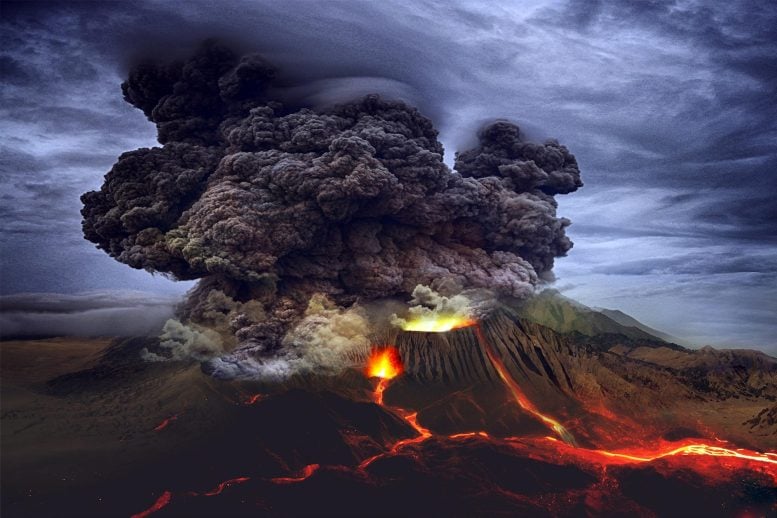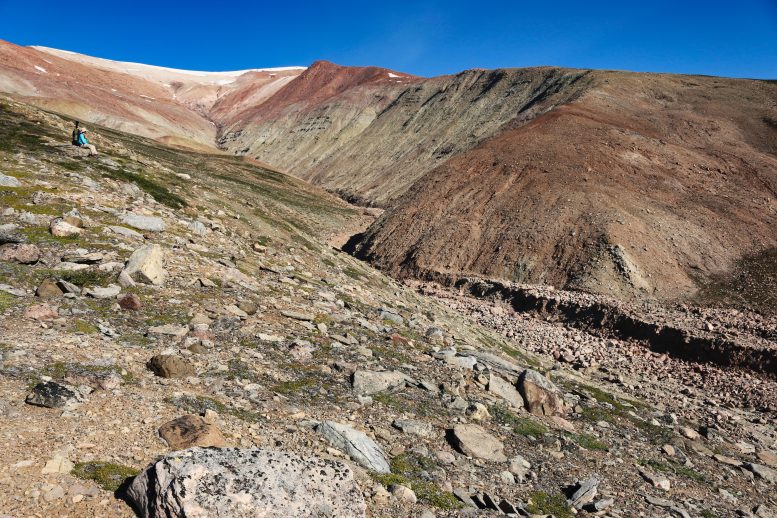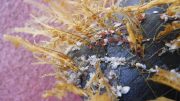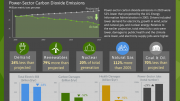
Over 370 million years ago, the Devonian era saw significant biological evolution but ended in a mass extinction event. Recent research indicates that this extinction resulted from both volcanic activity and plant-driven deoxygenation. This study, combining various scientific disciplines, underscores the relevance of Earth’s history in addressing current environmental issues.
A new study indicates that a combination of volcanic activity and oceanic purification processes drove Earth’s ecosystems to a tipping point.
Diverse and full of sea life, the Earth’s Devonian era — taking place more than 370 million years ago — saw the emergence of the first seed-bearing plants, which spread as large forests across the continents of Gondwana and Laurussia.
However, a mass extinction event near the end of this era has long been the subject of debate. Some scientists argue the Late Devonian mass extinction was caused by large-scale volcanic eruptions, causing global cooling. Others argue a mass deoxygenation event caused by the expansion of land plants was to blame.
Recent Study Findings
A recently published study in the journal Communications Earth and Environment led by researchers at IUPUI now posits that both factors played a role — and draws attention to the environmental tipping points the planet faces today.
Filippelli and Gilhooly said the study’s conclusion gives researchers a lot to consider. During the Devonian era, new biological outcomes on land produced negative effects for life in the ocean. In the present day, Gilhooly noted, activities like fertilizer runoff emptying into the ocean, combined with heating from fossil fuel combustion, are reducing oceans’ oxygen levels. The previous outcome of this similar scenario in the Late Devonian had catastrophic outcomes, he said.

Study researchers participate in fieldwork at Trail Island in East Greenland, near a Late Devonian rock outcrop. Credit: John Marshall, University of Southampton
Historical Lessons and Modern Implications
“Throughout Earth’s history, there have been a series of biological innovations and geological events that have completely reshaped biological diversity and environmental conditions in the ocean and on land,” Gilhooly said. “In the Devonian era, a new biological strategy on land produced a negative impact for life in the ocean. This is a sobering observation when put in the context of modern global and climatic change driven by human activities. We have a lot to learn from Earth’s history that can help us think of strategies and actions to avoid future tipping points.”
Other contributors to the study were Kazumi Ozaki of the Tokyo Institute of Technology, Christopher Reinhard of the Georgia Institute of Technology, John Marshall of the University of Southampton, and Jessica Whiteside of San Diego State University.
The study is co-authored by School of Science at IUPUI faculty Gabriel Filippelli and William Gilhooly III. The lead author is Matthew Smart, an assistant professor of oceanography at the U.S. Naval Academy who was a graduate student in Filippelli’s lab at the time of the study.
Findings and Methodology
The work is the first to unify two competing Late Devonian extinction theories into a comprehensive cause-and-effect scenario. Essentially, the group concluded that both events — mass volcanism and deoxygenation caused by land plants flushing excess nutrients into oceans — needed to occur for the mass extinction to take place.
“The key to resolving this puzzle was identifying and integrating the timing and magnitude of the geochemical signals we determined using a sophisticated global model,” Filippelli said. “This modeling effort revealed that the magnitude of nutrient events we were seeing based on the geochemical records could drive substantial marine extinction events, but the duration of the events required both factors — tree root evolution and volcanism — to sustain the marine conditions that were toxic to organisms.”
With experts in sedimentology, paleontology, geochemistry, biogeochemistry, and mathematical modeling, the group literally dug deep to geochemically analyze hundreds of samples scattered across different continents. These include samples from Ymer Island in eastern Greenland, home of some of the oldest rock samples on the planet.
“The process was highly interdisciplinary,” Gilhooly said. “This combined expertise created a rigorous approach to collecting the samples, correlating sequences in time, acquiring the chemical data, and using geochemical models to test working hypotheses about the relative influences of biotically — plants — and chemically — volcanoes — driven triggers of mass extinction. Our analyses demonstrate that the influences are much more mixed than an either-or scenario.”
Reference: “The expansion of land plants during the Late Devonian contributed to the marine mass extinction” by Matthew S. Smart, Gabriel Filippelli, William P. Gilhooly III, Kazumi Ozaki, Christopher T. Reinhard, John E. A. Marshall and Jessica H. Whiteside, 29 November 2023, Communications Earth & Environment.
DOI: 10.1038/s43247-023-01087-8
The study was funded by the National Science Foundation, the American Chemical Society Petroleum Research Fund, and JSPS KAKENHI.











“A new study indicates that a combination of volcanic activity and oceanic purification processes drove Earth’s ecosystems to a tipping point.”
Shouldn’t “purification” be “putrification?”
From the actual article, “Upon colonization, young landscapes were rapidly weathered in the nascent stages of soil formation, releasing large amounts of phosphorus which was eventually transported to Devonian oceans.” For inorganic phosphorus to be delivered to the oceans, I would expect that the streams and rivers to be acidic, for which no evidence is presented. On the other hand, if organic detritus were delivered to the oceans from inland flooding events, then bacteria/fungi in the oceans would be able to decompose (oxidize) the organic material, releasing CO2 and phosphorus for plankton.
A “tipping point” implies a condition from which the natural system cannot recover, as when a tree falls over. Our present landscape is evidence that Earth’s biota not only recovered, but did so several times. Terms like “inflection point” or “rapid change in conditions,” while more accurate, isn’t as scary as “tipping point.” I do wish that scientists would return to talking like scientists instead of carnival barkers.
Very interesting stuff!